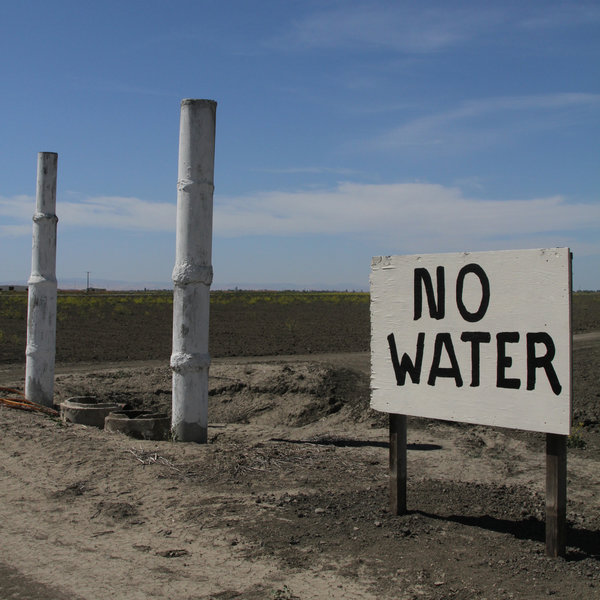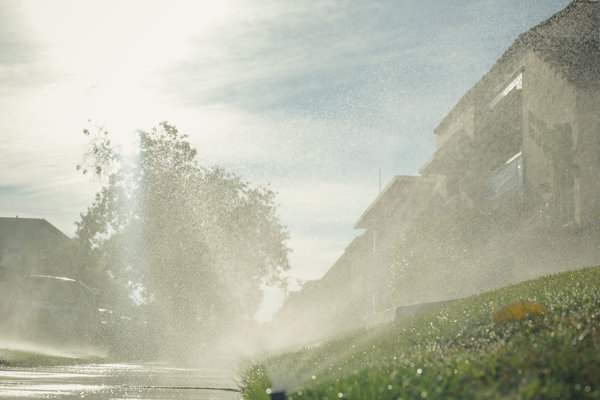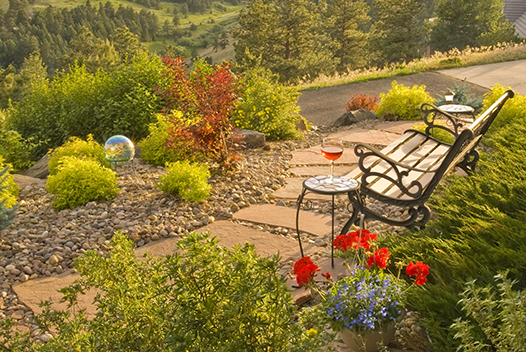
[callout]Regarding NY Times Article Below “The End of California?” – You may notice that we at Element Landscape post a lot of articles on the drought in California. In fact, sometimes we struggle with doing so because we don’t want our all our articles to be negative or appear we are trying to scare people. But the California drought is a very serious topic, and we believe it belongs in the forefront of all conversations regarding California. We see more and more about the drought in the news and media as conditions worsen which has helped raise awareness, however, we believe this should have happened much sooner before things got to the state which they are at today. With a problem so large, it is easy to feel overwhelmed and not know what, if anything, an individual can do to help. But one easy thing we all can do is help raise awareness about the issue, and the things we can all do to help. This is one of the driving forces for why we at Element Landscape launched a new website so we could highlight the drought and the things people like us are doing to help reduce water use while still maintaining the way of life that we all enjoy in California. Click the button below to contact us about water saving options for your home such as greywater systems, smart irrigation controllers, or drought resistant plant material.
[/callout]
[button title=”Contact Element Landscape” link=”https://www.element-landscape.com/?page_id=132″ new_tab=”no” color=”emerald”]
[separator type=”default-double”]
Article by Timothy Egan
NEW YORK TIMES
[button title=”Go to NY Times Article” icon=”hb-moon-meter-fast” link=”http://www.nytimes.com/2015/05/03/opinion/sunday/the-end-of-california.html” new_tab=”no” color=”alizarin” special_style=”yes”]
ANGELS CAMP, Calif. — IN a normal year, no one in California looks twice at a neighbor’s lawn, that mane of bluegrass thriving in a sun-blasted desert. Or casts a scornful gaze at a fresh-planted almond grove, saplings that now stand accused of future water crimes. Or wonders why your car is conspicuously clean, or whether a fish deserves to live when a cherry tree will die.
Of course, there is nothing normal about the fourth year of the great drought: According to climate scientists, it may be the worst arid spell in 1,200 years. For all the fields that will go fallow, all the forests that will catch fire, all the wells that will come up dry, the lasting impact of this drought for the ages will be remembered, in the most exported term of California start-ups, as a disrupter.
“We are embarked upon an experiment that no one has ever tried,” said Gov. Jerry Brown in early April, in ordering the first mandatory statewide water rationing for cities.
Surprising, perhaps even disappointing to those with schadenfreude for the nearly 39 million people living in year-round sunshine, California will survive. It’s not going to blow away. The economy, now on a robust rebound, is not going to collapse. There won’t be a Tom Joad load of S.U.V.s headed north. Rains, and snow to the high Sierra, will eventually return.
But California, from this drought onward, will be a state transformed. The Dust Bowl of the 1930s was human-caused, after the grasslands of the Great Plains were ripped up, and the land thrown to the wind. It never fully recovered. The California drought of today is mostly nature’s hand, diminishing an Eden created by man. The Golden State may recover, but it won’t be the same place.
Looking to the future, there is also the grim prospect that this dry spell is only the start of a “megadrought,” made worse by climate change. California has only about one year of water supply left in its reservoirs. What if the endless days without rain become endless years?
In the cities of a changed California, brown is the new green. A residential lawn anywhere south of, say, Sacramento, is already considered an indulgence. “If the only person walking on your lawn is the person mowing it,” said Felicia Marcus, chairwoman of the State Water Resources Control Board, then maybe it should be taken out. The state wants people to convert lawns to drought-tolerant landscaping, or fake grass.
Artificial lakes filled with Sierra snowmelt will become baked-mud valleys, surrounded by ugly bathtub rings. Some rivers will dry completely — at least until a normal rain year. A few days ago, there was a bare trickle from the Napa, near the town of St. Helena, flowing through some of the most valuable vineyards on the planet. The state’s massive plumbing system, one of the biggest in the world, needs adequate snow in order to serve farmers in theCentral Valley and techies in Silicon Valley. This year, California set a record low Sierra snowpack in April — 5 percent of normal — following the driest winter since records have been kept.
A redundant sign in a fallow field in Los Banos, Calif. Credit Ken Light/Contact Press Images, for The New York Times
To Californians stunned by their bare mountains, there was no more absurd moment in public life recently than when James Inhofe, the Republican senator from Oklahoma who is chairman of the environment and public works committee, held up a snowball in February as evidence of America’s hydraulic bounty in the age of climate change.
You can see the result of endless weeks of cloudless skies in New Melones Lake, here in Calaveras County in the foothills east of the Central Valley, where Mark Twain made a legend of a jumping frog. The state’s fourth largest reservoir, holding water for farmers, and for fish downstream, is barely 20 percent full. It could be completely drained by summer’s end.
It’s a sad sight — a warming puddle, where the Stanislaus River once ran through it. At full capacity, with normal rainfall, New Melones should have enough water for nearly two million households for a year.
Even worse is the Lake McClure reservoir, impounding the spectral remains of the Merced River as it flows out of Yosemite National Park. It’s at 10 percent of capacity. In a normal spring, the reservoir holds more than 600,000 acre-feet of water. As April came to a close, it was at 104,000 acre-feet — with almost no snowmelt on the way. (The measurement is one acre filled to a depth of a foot, or 325,851 gallons.) That’s the surface disruption in a state that may soon be unrecognizable in places.
The morality tale behind California’s verdant prosperity will most certainly change. In the old narrative, the evil city took water from powerless farmers. Swimming pools in greater Los Angeles were filled with liquid that could have kept orchards alive in the Owens Valley, to the north.
It was hubris, born in the words of the city’s chief water engineer, William Mulholland, when he opened the gates of the Los Angeles Aqueduct in 1913 with an immortal proclamation: “There it is. Take it.”
But now, just about everyone in California knows that it requires a gallon of water to grow a single almond, or that agriculture accounts for 80 percent of the water used by humans here. Meanwhile, the cities have become leaders in conservation. It takes 106 gallons of water to produce an ounce of beef — which is more than the average San Francisco Bay Area resident uses in a day. Mayor Eric Garcetti of Los Angeles wants to reduce the amount of water the city purchases by 50 percent in the next decade, cutting back through aggressive use of wastewater and conservation.
It’s outlandish, urban critics note, for big farm units to be growing alfalfa — which consumes about 20 percent of the state’s irrigation water — or raising cattle, in a place with a third of the rainfall of other states. And by exporting that alfalfa and other thirsty crops overseas, the state is essentially shipping its precious water to China.
Still, casting California farmers — who produce about half of the nation’s fruits, nuts and vegetables — as crony capitalist water gluttons may not be entirely fair. Yes, the water is subsidized, through taxpayer-funded dams, canals and pumping systems. But that water, in some cases, ends up as habitat for birds and wildlife. As it drains away, it can recharge badly depleted underground aquifers. Farmers have already let more than 400,000 acres go fallow and took a $2 billion hit last year. They may add 600,000 acres to that total this year. Almonds, after all, are a healthy food source.
The new morality tale becomes further muddled when you consider that San Francisco, praised for its penurious water ways, gets its life-supporting liquid from the Hetch Hetchy dam, in Yosemite. Many people, dating from the sainted John Muir, believe that flooding that mountain valley was one of the bigger crimes against nature in California history.
And not every city is Spartan with its water. On any given day you can find, as I did in a new housing development in the foothills east of Sacramento, water running down the street — at a flow rate that looked bigger than that coming from the anemic Merced River. It was pouring onto a grass median strip, and then spilling over, in a development called the Estates at Blackstone.
Or consider that wealthy communities — say, Portola Valley, woodsy home to many an environmentally conscious tech multimillionaire — use far more water per capita than do the poor of Compton, in the Los Angeles area. When cost is no object, there is very little incentive to cut back.
But there is no getting around the fact that agriculture, for all its water needs, still produces barely 2 percent of the state’s gross product, and employs only about 3 percent of its workers.

Lawns are still watered, like the one pictured above in Los Angeles.
Fair or not, it seems incongruous that farmers in the San Joaquin Valley are still planting new almond trees — they’ve nearly doubled the crop since 2005 — while people in the cities kill their lawns and dash in and out of low-flow showers.
The idea that California could have it all — a pool in every suburban backyard, new crops in a drought, wild salmon in rivers now starved of oxygen — is fading fast. There is only so much more “pop per drop,” as Ms. Marcus, the State Water Resources Control Board chairwoman, said, or neighbor snitching on neighbor, until the urban majority resists and demands a change in allocation.
What will come, then, from this disrupting drought is likely to be a shift of power. The urban “almond shaming” chorus is quick to note that the crop uses enough water to support 75 percent of the state’s population. In other words, there would be no water shortage in San Diego or Los Angeles if nut growers shut off the pumps.
“Imagine if somebody ever said, ‘Let’s have a vote on how to use California’s water,’ ” said Daniel Beard, a former Bureau of Recreation commissioner and a critic of federal dam building. “That’s the last thing big agricultural interests would want.”
The food industry is ripe for disruption. The land that has been left fallow now in the Central Valley is still less than 5 percent of all the irrigation acreage in California. Another 5 percent would leave most of the industry standing, and leaner. Low-value, high-water crops would disappear, as is already happening.
Absent a vote of the people, the free market could end up as the decider. The big city water districts have more than enough money to buy farm water in a freewheeling exchange. Indeed, they’ve been making numerous purchases for years — though limited by complex water contracts and infrastructure that makes it difficult to pipe large amounts from one place to the other.
In addition, one fear of making water an open-market commodity is that rich and politically powerful communities would get all the clean water they needed, while poor public districts would be left out. A class system around breathable air has already developed in China. Is abundant water the next must-have possession of the 1 percent?
Agriculture will not give up its perch atop the power pyramid without a fight. Water that goes from the mountains to the sea is a waste, farmers say. The drought is “a man-made” disaster, as Carly Fiorina, the former Hewlett-Packard executive who will likely run for the Republican presidential nomination, claims. She blames environmentalists for blocking major dam projects.
“California is a classic case of liberals being willing to sacrifice other people’s lives and livelihoods at the altar of their ideology,” she said on Glenn Beck’s radio program a few weeks ago. Of course, one of those elites was Ronald Reagan, who as governor signed legislation in 1973 that protected the Eel River in Northern California from dam builders.
“The environment is already taking a big hit in this drought,” said Ellen Hanak, director of the Water Policy Center at the nonprofit Public Policy Institute of California. “My sense is that Californians are pretty supportive of both a strong agricultural economy and a healthy environment.”
Big new reservoir projects — a return of the concrete empire — are doubtful. Without a government subsidy, cost is the biggest obstacle. Farmers certainly aren’t going to pay the billions now footed by federal taxpayers. And then: Where is the “new” water going to come from? Underground, wells are probing ever deeper, sucking aquifers dry, the land sinking at a dramatic rate. Overhead, the sky is unreliable.
Desalination, making seawater potable, is another option, which Carlsbad, north of San Diego, is now pursuing with a huge plant under construction. Australia went down this road during its epic drought in the 2000s. But the plants proved to be so prohibitively expensive to run that four of them were mothballed. Billions were spent without producing a drop of clean water.
What California still has, in great supply, is ingenuity. Three years ago, Mitt Romney compared the state to bankrupt Greece. It was laughed at and written off by conservative pundits. California now has a budget surplus and led the nation in job growth last year — far outpacing Texas.
The drought may indeed be a long overdue bill for creating an oasis civilization. But therein lies a solution. The Golden State is an invention, with lives to match. If the drought continues, California will be forced to rely even more on what has long sustained it — imagination. Not a bad thing to have too much of.



